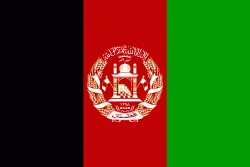Sayghan District (Sayghān)
Sayghan District, also spelt Saighan, Seyghan and other variant spellings, and also known as Saraik or Sarayek, and other variant spellings of this name, is an administrative district of Bamyan Province, Afghanistan.
Sayghan District was created in 2005 from part of Kahmard District, and until 2004 was part of Baghlan Province. Sayghan is the largest town and the administrative centre. The district has an area of 1,741 km2 and contained 62 villages.
Neighbouring districts are Bamyan District to the south, Yakawlang District to the west, Kahmard District to the north, and Shibar District to the east.
It is 1993 m above sea level.
Sayghan District was created in 2005 from part of Kahmard District, and until 2004 was part of Baghlan Province. Sayghan is the largest town and the administrative centre. The district has an area of 1,741 km2 and contained 62 villages.
Neighbouring districts are Bamyan District to the south, Yakawlang District to the west, Kahmard District to the north, and Shibar District to the east.
It is 1993 m above sea level.
Map - Sayghan District (Sayghān)
Map
Country - Afghanistan
 |
 |
| Flag of Afghanistan | |
Human habitation in Afghanistan dates back to the Middle Paleolithic era, and the country's strategic location along the historic Silk Road has led it to being described, picturesquely, as the ‘roundabout of the ancient world’. Popularly referred to as the graveyard of empires, the land has historically been home to various peoples and has witnessed numerous military campaigns, including those by the Persians, Alexander the Great, the Maurya Empire, Arab Muslims, the Mongols, the British, the Soviet Union, and most recently by a US-led coalition. Afghanistan also served as the source from which the Greco-Bactrians and the Mughals, amongst others, rose to form major empires. The various conquests and periods in both the Iranian and Indian cultural spheres made the area a center for Zoroastrianism, Buddhism, Hinduism, and later Islam throughout history.
Currency / Language
| ISO | Currency | Symbol | Significant figures |
|---|---|---|---|
| AFN | Afghan afghani | Ø‹ | 2 |
| ISO | Language |
|---|---|
| PS | Pashto language |
| FA | Persian language |
| TK | Turkmen language |
| UZ | Uzbek language |















